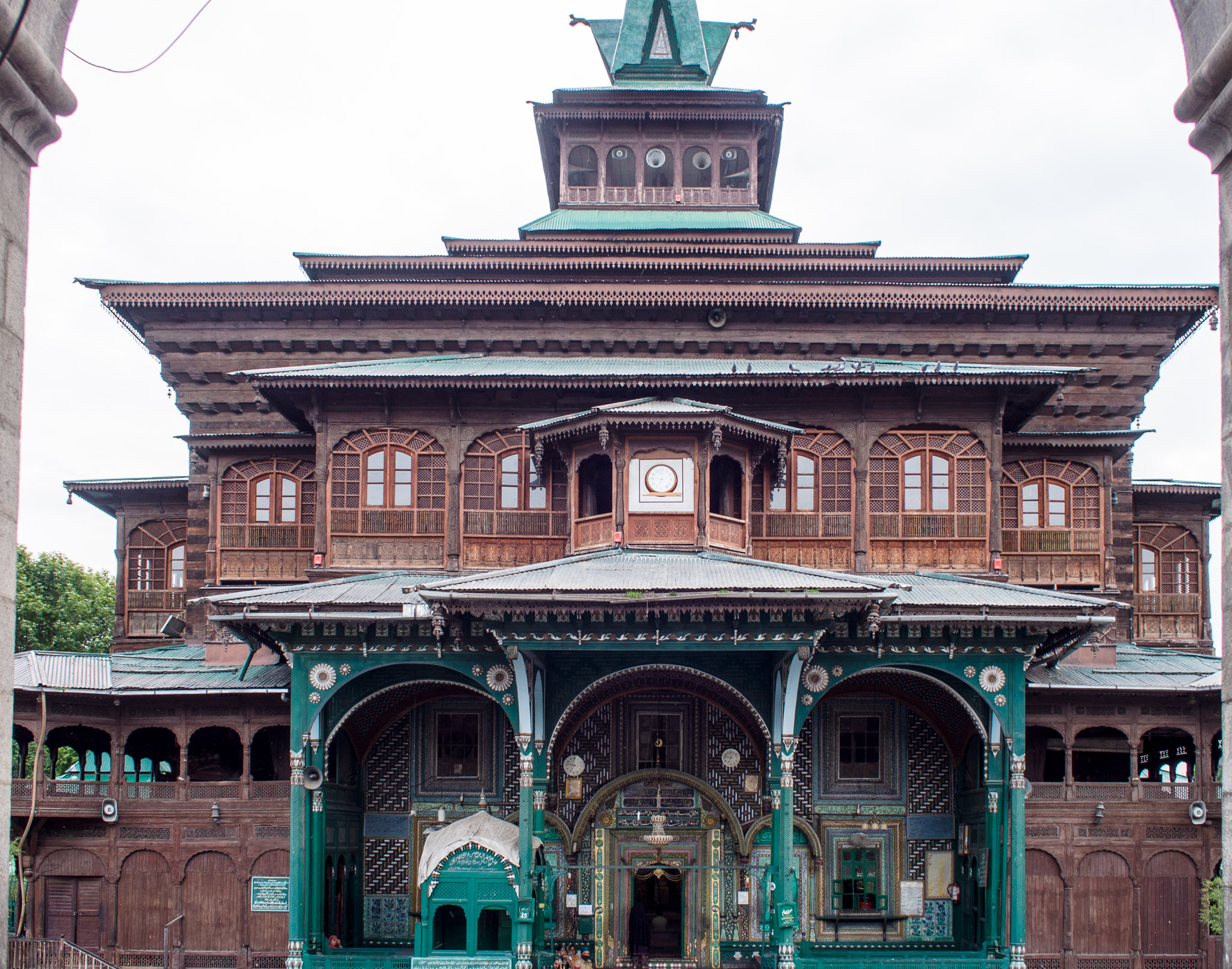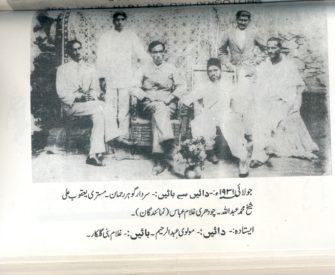
India consistently pushes the narrative that removing the special status of Indian-administered Kashmir addresses development, curbs nepotism, and fights “terrorism” – all supposedly towards good governance. Scholars, writers, and activists, including myself, have countered the arguments provided in support of the removal as “strawmen.” The Bhartiya Janata Party (BJP) across India primarily runs on an anti-Muslim and anti-minority agenda. The erasure of Kashmir’s autonomy and dilution of its Muslim majority by settler colonialism have been part of the BJP’s rallying cries since 1947. It must be kept in mind that all Indian governments from the outset have engineered a steady erosion of Kashmir’s autonomy with the aim of absorbing the region irrespective of the Kashmiri demand for a plebiscite and independence from India. The BJP’s “Kashmir solution” has brazen hyper-religious and nationalistic roots entrenched in Hindu supremacy and ethnonationalism (or Hindutva) [1]. This enterprise is fully fueled by the neoliberal order that aims to sustain India as a modern neocolonial force. Currently in India the ideology of Hindu indigeneity, which casts Muslims living in India as invaders and foreigners, has taken hold. In that equation, Kashmiri Muslims are doubly marked as the demonized other: first as Muslims, and second as Kashmiris who are longstanding dissidents committed to the fight for a UN-mandated plebiscite, democratic sovereignty, and freedom from India (Zia 2018: Chapter 3, 103–28). This ideology has taken shape with India passing the Citizenship Amendment Act (CAA) recently. The CAA, along with the planned National Register of Citizens (NRC), are a set of laws that will prove discriminatory primarily to Muslims.
Rising international voices have criticized the brutal crackdown by the government of India on the Kashmiris since the revocation of Article 370 was announced on August 5, 2019. Nonetheless, it seems that the wider neoliberal world has bought into arguments in favor of this removal of autonomy, perhaps because of India’s billion-strong market. Since this announcement, life in Kashmir has remained under siege. The region is reeling under a humanitarian crisis, and no international actors have intervened. Basic civil rights including healthcare, education, economy, and expression are all suspended. Curfews have been the order of the day and the internet is shut down. Only landlines and some cellphones have been operational for the past month or so. Since August, Kashmir has been in a communication black hole with little news trickling out. While India touts the removal as serving the interest of development, the economic loss inflicted by the lockdown has cost Kashmiris $2.4 billion [2].
Kashmiris restricted from open dissent have countered with a civil boycott, or hartal. This means that on top of government restrictions, people have voluntarily ceased their daily activities and are staying indoors. This civilian boycott manifests the excruciating haplessness of the Kashmiri resistance. In order to register some form of protest, people are forced to adopt a politics of self-injury. Only small stores, produce vendors, and automobiles operate for short durations to keep essential supplies circulating. Otherwise, as a Kashmiri friend puts it, “soruy chu thapp” (everything is under a halt.)
When India and Pakistan were birthed in 1947, Kashmir was an independent princely kingdom that wanted to retain its sovereignty. The British gave this swath of a region territorial shape and sold it to a Hindu warlord from the Dogra dynasty in 1846. Called the Amritsar Treaty, this transaction is known as one of the most damaging real estate sales in the history of humanity. The British not only sold the land, but also the people of Kashmir en masse, to the warlord. The Dogra kings in turn brutally extracted maximum profit from their investment. They oversaw an autocratic regime of back-breaking taxes and extreme discrimination against the Muslim populations who formed the majority. The other religious traditions in the region included the Pandits, the name for Kashmiri Shaivite Brahmins given by a Mughal king, and small populations of Sikhs, Buddhists, and Christians.
Two of these communities, the Pandits and Muslims, share ethnic and cultural ties. They began breaking into various sects in the 11th century as casteism, ritualism, and schisms began springing up in the ethno-religious life of Kashmiris. The renowned Kashmiri historian Professor Isaaq Khan described the medieval Kashmiri society “undergoing a crisis of what may be described as ‘human sociality’ versus Brahmanic particularism” (8).
Over centuries, the majority of Kashmiris converted to Islam, encouraged by the egalitarian potential of the religion in comparison to previous practices. The Brahmanical community was treated varyingly by successive dynasties and over time they largely adapted well to changing rulers. By the end of 18th century, they were a dominant, educated, and landowning political elite. A small number of Muslim clergy and landowners also enjoyed the privileges of titles and estates under different rulers. But the majority of Muslims lived in penury, illiteracy, and landless peasantry. Indentured/forced labor—called “begaar”—was rampant. Prostitution and human trafficking, which included children, was legal and taxed. The weavers of the world-famous Kashmiri shawl, brutalized by heavy taxes, began the Shawlbaaf Tehreek (shawl-weavers’ movement), an early and pioneering labor movement. This movement was brutally repressed when on April 29, 1865, the Dogra government killed 28 activists, many of whom were detained and died in jails.

In 1947, British India and the princely states were an amalgam of different territorial entities and hundreds of kingdoms. They were consolidated under the single dominion of the imperial crown. The partition that followed the end of British rule was predicated on religion: Muslims would join Pakistan and Hindus would join India. In the early parleys of state-making, the Indian government deployed all forms of political, diplomatic, and military tools to annex the Kashmir region. The term deployed to describe this process was “integration.” It was accompanied by supposed consensus-building exercises, but was primarily achieved by military annexation. Soon after the two nations of India and Pakistan came into being, they started a war over the territory of Kashmir. Even though the Dogra king had a standstill agreement with Pakistan, which was seen as a prelude to acceding to that country, he hastily signed off the entire territory, and effectively its people, to India: a modern version of the Amritsar treaty. After the United Nations intervened, Kashmir was bifurcated into two parts: the Indian- and Pakistan-administered territories separated by an UN-arbitrated ceasefire line (now called Line of Control, or the LoC).
Kashmiris strongly contest the accession for which they were not consulted. The fleeing king pledged to join India on the precondition that the final settlement would take place through the UN-mandated plebiscite. The King’s decision to accede to India was also influenced by M. S. Golwalkar, the leader of the Rashtriya Swayam Sevak Sangh (RSS), a Hindu supremacist paramilitary organization. The de-facto coup against Hari Singh was supported by key Kashmiris who were leaders in their own right, but who fell short as visionaries in ensuring a just future for the region. From the get-go, they wittingly or unwittingly served as India’s client politicians, ironically falling prey to the patina of secularism offered by India. The resource-rich Kashmir region was emotively fashioned by Jawahar Lal Nehru, the first Prime Minister of India and a Pandit by descent, as crucial for maintaining the secular nature of the dominantly Hindu Indian state. During the violence of Indo-Pak partition, Mahatma Gandhi called the region a ray of hope because of the absence of violence between Muslims and Pandit Kashmiris in the Kashmir Valley. However, in November of 1947, in the other province of the kingdom named Jammu, 200,000 Muslims were massacred in a pogrom. The Dogra king himself distributed weapons to the responsible militia, and the RSS were party to it. The militia helped the Indian army during the war. The BJP, which is ruling India today, is the political arm of the RSS.
Barring a small number, most Kashmiri Pandits have always favored Indian rule. While the majority of Kashmiri Muslims seek independence, a strong section wants to accede to Pakistan. Most Kashmiri Muslims continue to share a deeply affective relation with Pakistan based on religious, spiritual, cultural, and trade ties that predate the partition. The breadth of this relationship is reflected in arguments the Dogra king made when the Indian leaders were influencing him to join their union in 1947. He argued that Kashmir was fully dependent on Pakistan and geographically contiguous as well. Kashmiris across the LoC continue to bear the brunt of the brutal partition of their homeland that separates families and valuable resources.
Article 370, which was drafted to ensure Indian-administered Kashmir’s special status, was in fact a Trojan horse. Nehru and his ilk saw it as a tunnel through which Indian laws and statues could be slyly passed to Kashmir. India steadily implemented laws to criminalize dissent. The laws effectively subsumed the UN resolution for a plebiscite and gradually criminalized the movement for self-determination. Recently, a minister from Indian National Congress—an old party with roots in British politics—publicly boasted that they had diluted Article 370 twelve times without any controversy. Indeed they had done it by discreetly deploying puppet regimes, coercion, rigged elections, and detention. The most important pivot point in the text of Article 370 was Article 35-A, which protected the territorial sovereignty of Kashmir. Native Kashmiris were recognized as “permanent residents” who had the exclusive right to property and franchise, just like any sovereign country.
At the very inception of when Kashmir got its special status, the RSS raised objections and demanded its erasure. This has continued to be one of the main objectives of the RSS. Kashmir’s special autonomous status was seen as an appeasement of Muslims and a threat to Indian unity. It is also important to remember that Mahatma Gandhi was killed by an RSS member because of his belief in the accommodation of Muslims.

While the government of India has provided all shades of explanation for the removal of Kashmir’s autonomy, the logic of making India a Hindu Rashtra has not surfaced much. The dominant Muslimness of Kashmir in the context of an India which is simmering in anti-Muslim and anti-minority hate must be accounted for. The lenses of xenophobia and Islamophobia are key to understanding the brutal crackdown on Kashmiris, which run on Hindu supremacy and ethnonationalism, and which are a part of India’s growth as a modern neocolonial power. The day the removal was announced, Hindu nationalists celebrated the event as a “historic step toward establishing the Hindu Rashtra” [Hindu nation]. Indians took to social media taunting Kashmiris about buying land and property in Kashmir. A politician announced that the government was conducting a survey to reopen 50,000 temples which the local Kashmiri pandit leaders countered by noting that Kashmir never had this many temples. Indian politicians and entertainers publicly gave calls to kidnap or marry “fair-skinned Kashmiri girls.” This ethno-nationalistic outpouring in India was the colonial gaze manifest, one which fetishizes an occupied land and its people, and perceives them as spoils of war.
The dilution of the Muslim-majority demography of Kashmir is key to understanding the erasure of Kashmir’s autonomy. With Kashmir’s autonomous status gone, all Indian laws are automatically applicable to the region, hence the CAA & the NRC are stoking further fear in Kashmir. There are protests across India challenging this legislation, which some have compared to Nuremberg laws that laid the foundation of the Jewish Holocaust. In context of rising institutionalization of discrimination against Muslims, Kashmiris fear that Indian settler colonialism and dispossession are becoming increasingly real inside the valley. The question now is: will the world keep silent?
[2] See also Anirudh Kala, Brinelle D’Souza, Revati Laul & Shabnam Hashmi, Kashmir Civil Disobedience: A Citizen’s Report.

